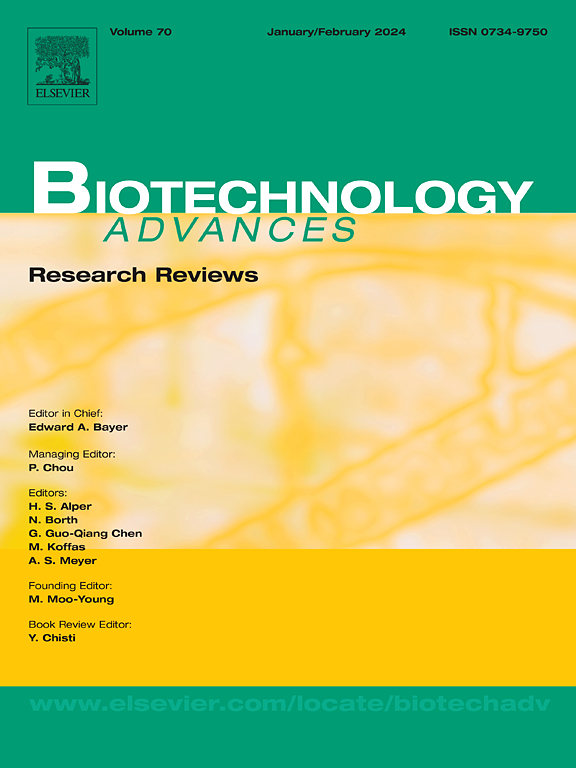酶的小型化:革新未来的生物催化剂。
IF 12.1
1区 工程技术
Q1 BIOTECHNOLOGY & APPLIED MICROBIOLOGY
引用次数: 0
摘要
酶的小型化提供了一种变革性的方法来克服传统酶在工业、治疗和诊断应用中的大尺寸限制。然而,酶在活性和稳定性方面的进化优化并不天生就倾向于紧凑的结构,这给需要更小、更高效催化剂的现代应用带来了挑战。本文综述了微型酶的优点,包括增强表达性、折叠效率、热稳定性和抗蛋白质水解性。我们描述了微型酶作为生物传感器、治疗剂和工业催化剂的应用。我们强调了基因组挖掘、合理设计、随机删除和从头设计等策略,以实现酶小型化,整合计算和实验技术。通过研究这些方法,我们的目标是为推进酶工程提供一个框架,强调小酶在生物催化、基因治疗和生物传感技术方面的独特潜力。本文章由计算机程序翻译,如有差异,请以英文原文为准。
Enzyme miniaturization: Revolutionizing future biocatalysts
Enzyme miniaturization offers a transformative approach to overcome limitations posed by the large size of conventional enzymes in industrial, therapeutic, and diagnostic applications. However, the evolutionary optimization of enzymes for activity has not inherently favored compact structures, creating challenges for modern applications requiring smaller catalysts. In this review, we surveyed the advantages of miniature enzymes, including enhanced expressivity, folding efficiency, thermostability, and resistance to proteolysis. We described the applications of miniature enzymes as industrial catalysts, therapeutic agents, and diagnostic elements. We highlighted strategies such as genome mining, rational design, random deletion, and de novo design for achieving enzyme miniaturization, integrating both computational and experimental techniques. By investigating these approaches, we aim to provide a framework for advancing enzyme engineering, emphasizing the unique potential of miniature enzymes to revolutionize biocatalysis, gene therapy, and biosensing technologies.
求助全文
通过发布文献求助,成功后即可免费获取论文全文。
去求助
来源期刊

Biotechnology advances
工程技术-生物工程与应用微生物
CiteScore
25.50
自引率
2.50%
发文量
167
审稿时长
37 days
期刊介绍:
Biotechnology Advances is a comprehensive review journal that covers all aspects of the multidisciplinary field of biotechnology. The journal focuses on biotechnology principles and their applications in various industries, agriculture, medicine, environmental concerns, and regulatory issues. It publishes authoritative articles that highlight current developments and future trends in the field of biotechnology. The journal invites submissions of manuscripts that are relevant and appropriate. It targets a wide audience, including scientists, engineers, students, instructors, researchers, practitioners, managers, governments, and other stakeholders in the field. Additionally, special issues are published based on selected presentations from recent relevant conferences in collaboration with the organizations hosting those conferences.
 求助内容:
求助内容: 应助结果提醒方式:
应助结果提醒方式:


